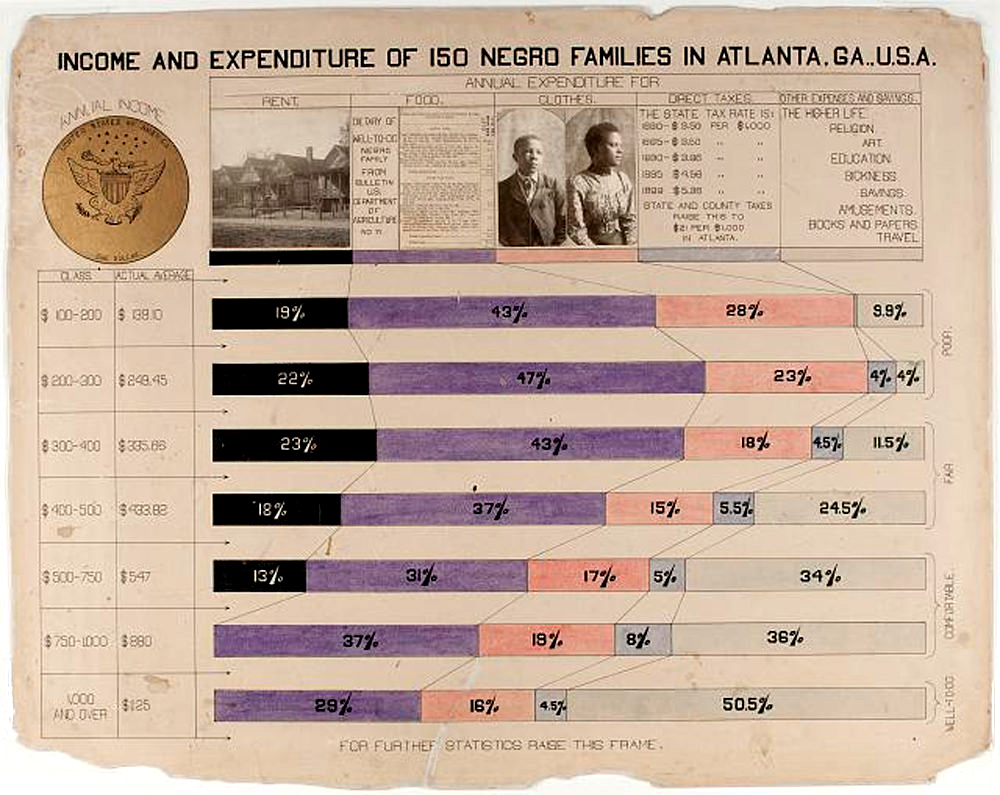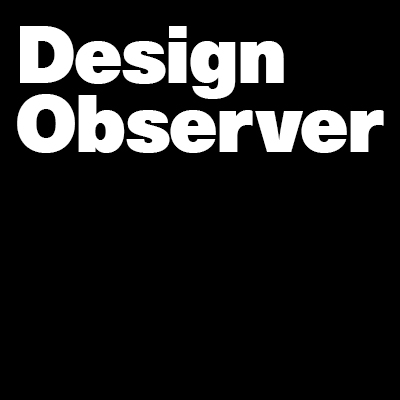
W.E.B. Du Bois' infographic displaying income and expenditures of black families in Atlanta. (Library of Congress)
Designers have always self-identified as futurists, but building an equitable future means reclaiming broader notions of everything, including and especially our collective, if corrosive history.
Time to pay closer attention to where we’re going. Which means paying closer attention to where we’ve been.
American graphic designer, artist, and pastor Cheryl D. Miller has some serious thoughts about that, and has—in collaboration with librarians at Stanford University—begun decolonizing the history of graphic design by curating a database she’s calling The History of Black Graphic Design.
But don’t take it from us. Here she is, in her own words.
I studied art history right there with you. I went to RISD. I went to Pratt. I went to MICA. What art history did I learn? Your art history. What design did I learn? Your design. You learned nothing of mine.
She’s right. It’s time to revisit the canon. And reshape it. And reframe it, with honesty, humility, and compassion. (You can read more about the broader pedagogy behind revised canon formation here.) Need help finding ways of igniting discussion, formation, and change? You’re not alone: here are some resources to get you started.
You might want to ask yourself, while all that canonical history was happening, who was watching, or bearing witness? What changed, or stayed the same? Who was there? Who was counted? And why does it matter?
It matters.
Cheryl Miller’s story is part of a bigger story. So is George Floyd’s and Breonna Taylor’s and Ahmaud Arbery’s and if you need a longer list, here it is. Say their names, even—and especially—when others don’t.
There’s are many reasons we’re supposed to never forget, and here is one.
Visual history is social history. Social history is human history. And human history is us.
As in, the names you didn’t hear, the stories you didn’t read, the voices which were, for whatever reasons, unavailable to you. Maybe you weren’t looking hard enough. Or listening closely enough.
It always mattered.
There’s a powerful sociological chronicle, for example, in W.E.B. Dubois’ data visualizations of Black life, carefully assembled by Britt Rusert and Silas Munro and published by Princeton Architectural Press in 2018. Please join us later this week when we welcome Britt and Silas as our guests for Design Observer’s inaugural fall Studio Sessions—this Thursday, October 1—at 8 Eastern / 5 Pacific. (Tickets are available here, with net proceeds going to Design for America.)
This is a conversation long overdue: the art and design canon is not now, nor has it ever been inclusive. Some rules were made to be broken. Others just need serious recalibration.
It’s high time we do both. Equitable means fair, and fair means openminded, and openminded means questioning all of it—the rules and the canons and the principles and the playbooks—in favor of a total rewiring of the historical synapses by which our flawed logic should have long ago been given term limits.
Design, it may be fair to say, has a bossy pants problem. And it’s time to let go a little.
Futurists, take note: looking backward to look forward is part of what it means to build an equitable world. We have to be able to ask, and learn. To try, and fail. To keep our minds independent and our hearts free to wander, to fail, and ultimately, to change and grow.
It’s not perfect. But it’s a start.
We’ll be back next month with more, and remind you that your suggestions are welcome here.
We’ll be back next month with more, and remind you that your suggestions are welcome here.

